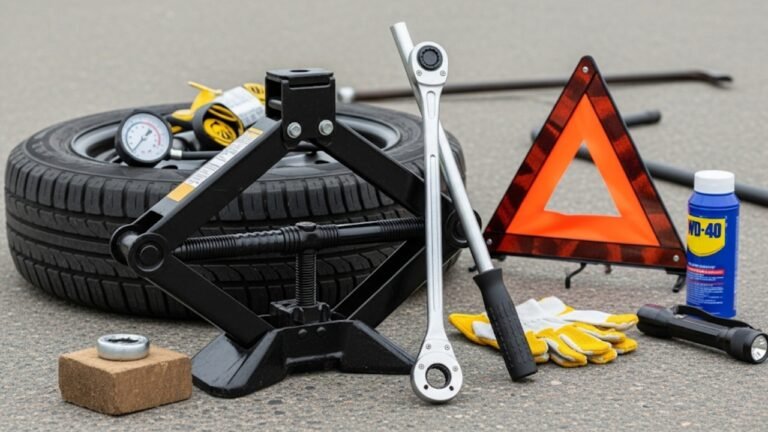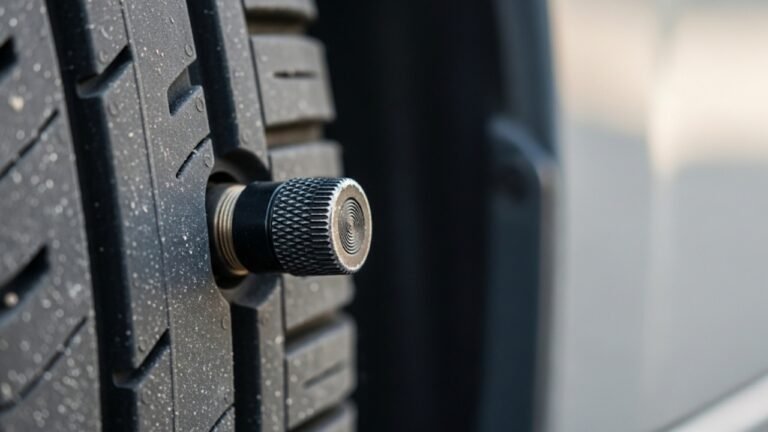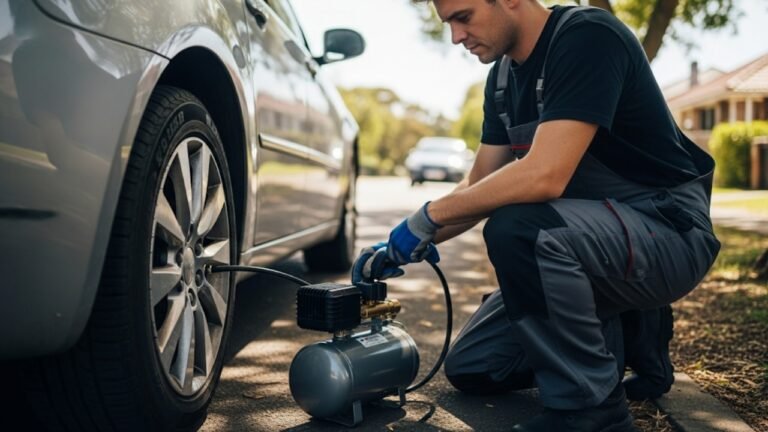Complete Guide to the Truck Tire Speed Rating Chart: Stay Safe & Smart
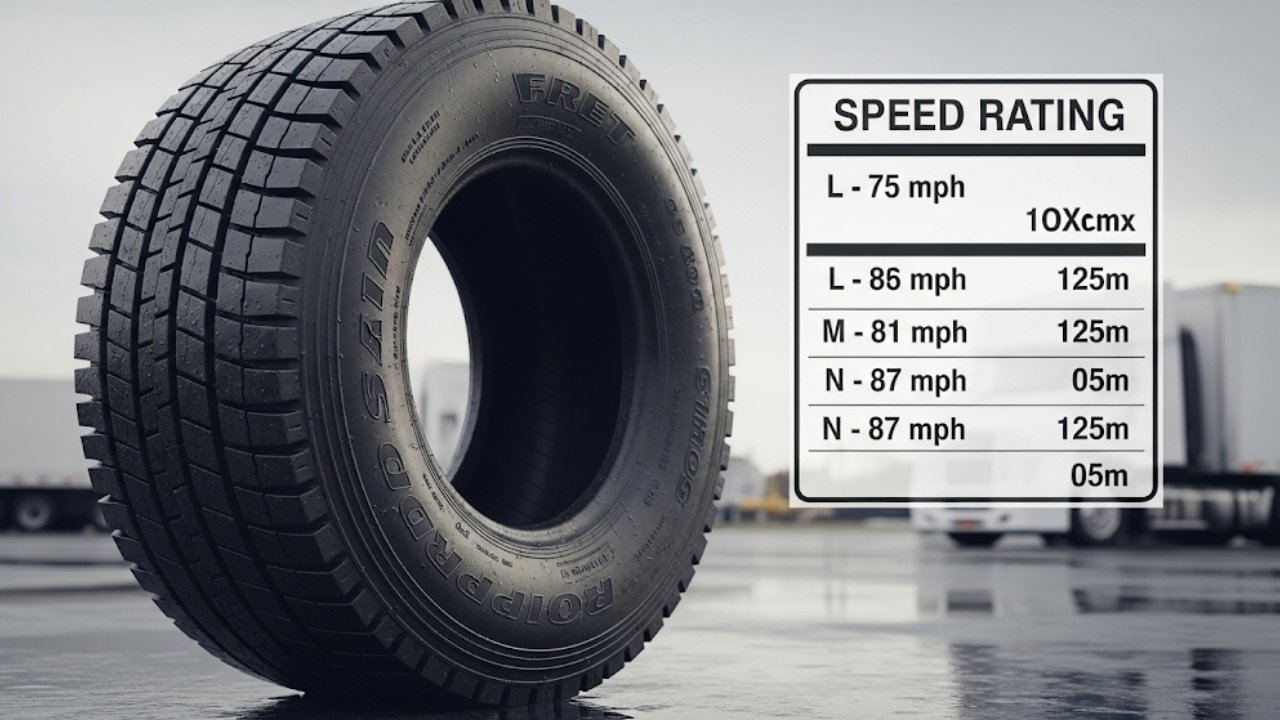
Have you ever bought new tires and seen a weird letter like “R” or “H” next to the size? Most people ignore it. I did too—until a tire blew out on a highway run from Dallas to Austin. That little letter almost cost me my truck.
That’s when I learned about the truck tire speed rating chart.
Speed ratings are more than just boring specs. They’re like your tires’ heartbeat—they tell you how fast you can safely go with that load and tire type. Ignore it, and you’re playing Russian roulette on the road.
Whether you’re hauling furniture, delivering goods, or driving cross-country for work, knowing your truck’s tire speed rating isn’t optional—it’s critical.
In this guide, I’ll explain what it means, how to read it, and what happens if you get it wrong. Stick around—it might just save your tires, your truck, and your peace of mind.
What Is a Truck Tire Speed Rating?
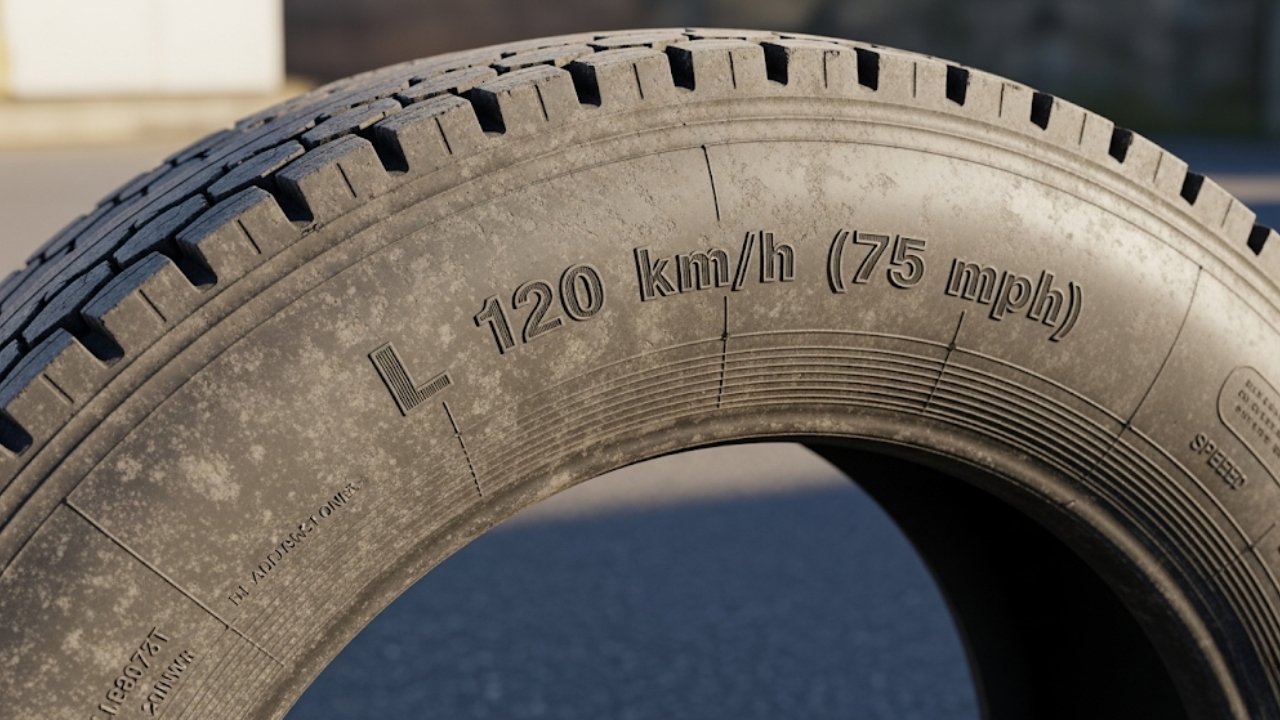
A speed rating tells you the maximum speed a tire can safely handle under load and ideal conditions. It’s based on lab tests run by tire makers, but in the real world, it’s your safety net on highways.
Why Should You Care?
Here’s the thing: If your tire is rated for 75 mph and you regularly hit 85 on the freeway, you’re pushing your tire beyond its safety limit. That builds heat. And heat is a tire’s worst enemy. It causes rubber to weaken, blowouts to happen, and accidents to follow.
️ Speed Rating Is Usually Found Here:
On the sidewall of your tire
Right after the tire size (like: LT245/75R16 120R – here, “R” is the speed rating)
Quick Tip:
Never choose a lower speed rating than your truck manufacturer recommends. It affects handling, tire life, and even insurance coverage in case of an accident.
How to Read a Truck Tire Speed Rating Chart
Let’s decode how the truck tire speed rating chart works. It uses letters from A to Z, with each letter matching a specific maximum speed.
Think of it like school grades—but instead of A being best, the higher the letter in this case, the faster the tire can go safely.
Here’s how to read the speed rating:
Each letter equals a maximum mph limit.
Higher letters = higher speed capacity
It’s tested under load—that means with weight on the tire
So, when you see “Q”, think “up to 99 mph,” and when you see “T”, think “up to 118 mph.”
Truck Tire Speed Rating Chart: Full Breakdown
Below is a detailed chart of common truck tire speed ratings. Print it, screenshot it—this is your cheat sheet.
| Speed Rating | Max Speed (mph) | Typical Use |
|---|---|---|
| L | 75 mph | Off-road/light-duty trucks |
| M | 81 mph | Commercial vehicles |
| N | 87 mph | Heavy-duty trailers |
| P | 93 mph | Light commercial use |
| Q | 99 mph | Winter tires or snow trucks |
| R | 106 mph | Common for pickup trucks |
| S | 112 mph | Light trucks/SUVs on highways |
| T | 118 mph | Highway driving, smooth loads |
| H | 130 mph | Performance light trucks/SUVs |
| V | 149 mph | High-performance vehicles |
Note: Always check your truck’s owner’s manual before choosing a speed rating.
Bonus Tip:
Speed rating isn’t just about speed—it affects tire stiffness, cornering grip, and even road noise.
The Real-Life Impact of Choosing the Wrong Speed Rating
Let me tell you a story.
A friend of mine, Marcus, drives a Ram 1500 and hauls metal supplies across New Mexico. He once swapped his stock tires for cheaper ones without checking the truck tire speed rating chart. They were rated “M” (81 mph). He usually drives at 90.
On a 102°F summer day, one of his rear tires blew out at 87 mph. Luckily, he managed to pull over. But the tire damage bent his rim and cost him over $600 in repairs—not to mention the late delivery fee.
Common Mistakes People Make:
Picking lower-rated tires because they’re cheaper
Ignoring speed ratings when buying used tires
Not matching load rating with speed rating
Using winter tires (rated “Q”) for summer highway runs
How to Choose the Right Truck Tire Speed Rating
So how do you know which speed rating is right for your truck? It really depends on your truck type, driving habits, load size, and even the terrain you drive on.
Step 1: Check Your Owner’s Manual
Your truck’s manual is your best friend here. It usually lists the recommended speed rating along with tire size and load index.
️ Step 2: Think About Driving Conditions
Do you drive mostly on highways? Then you need a higher speed rating (like S or T). Off-roading in rough terrain? You’re probably okay with L or M.
Step 3: Consider the Load
Speed ratings are tested under specific load conditions. If you haul heavy loads, make sure your tires have a load index that matches your needs and doesn’t conflict with the speed rating.
Step 4: Match All Tires
Don’t mix and match different speed ratings on one vehicle. That affects performance and might even violate DOT regulations.
Final Tip: Choose Based on Real-World Needs
Don’t just buy the highest speed rating. A “V” rated tire might sound cool, but if you’re hauling mulch at 60 mph max, it’s overkill.
️ Factors That Affect Tire Speed Ratings
Tire speed ratings don’t exist in a vacuum. They are affected by a range of real-world conditions that every truck driver should understand.
Heat
The faster you drive, the more heat your tires generate. Overheated tires wear out quicker and risk catastrophic blowouts. Speed ratings are based on lab tests at a constant speed, not desert highways in August.
Weather
Winter tires usually have a lower speed rating. For example, “Q” is common in snow tires. Rubber gets stiffer in the cold, so performance drops at high speeds.
️ Road Conditions
Uneven roads, potholes, and off-road paths increase stress on tires. Even a properly rated tire can fail if the surface is brutal.
️ Load
Heavy cargo lowers your tire’s effective speed rating. Even if your tires are “S” rated, a full bed of bricks may reduce safe speed by 10-15 mph.
Frequently Asked Questions (FAQs)
1. Can I use tires with a higher speed rating than recommended?
Yes, but only if the load index matches. Higher-rated tires often give better handling but may wear out quicker or cost more.
2. What happens if I drive faster than my tire’s speed rating?
Doing this regularly can cause overheating, sidewall failure, or full blowouts. It’s dangerous and can void your warranty.
3. Is tire speed rating required by law?
Not directly, but mismatched speed ratings can affect insurance claims, vehicle inspections, and even fleet safety audits.
4. Do tire speed ratings affect ride comfort?
Yes. Higher-speed tires often have stiffer sidewalls, which can make the ride feel harder or bumpier.
5. Do larger tires have lower speed ratings?
Not necessarily. It depends on the tire design, not just size. But larger, heavy-duty off-road tires often have lower ratings.
6. What’s the difference between speed rating and load rating?
Speed rating = how fast your tire can go safely. Load rating = how much weight it can carry. Both must be considered together.
7. Where can I find the speed rating on my tire?
It’s printed on the sidewall. For example, LT265/70R17 115S — the “S” is the speed rating.
8. Can tire age affect speed rating?
Yes. A tire loses flexibility over time. Even if it’s never used, an old tire may not be safe at its original speed rating.
Real-World Scenarios: Applying the Truck Tire Speed Rating Chart
Example 1: Construction Truck
Jake runs a Ford F-250 for his small construction business. He often carries bags of cement and tools in the back. He used to run tires rated “S” (112 mph) but rarely went over 65 mph. Switching to an “R” rating saved him money without compromising safety.
Example 2: Long-Haul Delivery
Lena drives a Ram 3500 delivering refrigerated goods from Texas to California. She frequently drives on hot highways at 75–80 mph. Her tires are rated “T” (118 mph), which gives her a safety cushion even with her cargo load.
️ Example 3: Off-Road Rancher
Derek owns a ranch in Wyoming. He rarely drives over 50 mph and spends most of his time on gravel and dirt paths. He uses “L” rated tires, which are optimized for low-speed off-road performance.
Final Tips: Stay Smart, Safe & Efficient
Here’s a quick wrap-up to help you make the best tire decision for your truck:
✅ Know your needs: Don’t overbuy or underbuy on speed rating
✅ Use the chart: Refer to the truck tire speed rating chart before buying
✅ Match load + speed: They go hand-in-hand
✅ Maintain your tires: Rotate, balance, and check for damage
✅ Drive mindfully: Even top-rated tires fail if abused
Final Thoughts
Tires may be round and black, but they’re not all the same. That tiny speed rating letter on your tire could mean the difference between a smooth ride and a stranded one.
So next time you’re choosing new tires, don’t just ask about price. Ask about the truck tire speed rating chart. Your truck deserves it. More importantly—you deserve it.
Stay safe out there.




